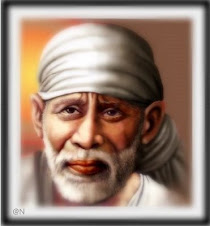
For many visitors, the dhuni is the most significant part of Dwarkamai, as it is so intimately associated with Baba. The dhuni is the sacred, perpetually burning fire that Baba built and which has been maintained ever since, though today the fire is much bigger and is enclosed behind a wire cage.
The maintenance of a dhuni is important in several traditions, including Zoroastrianism, Sufism and Hinduism (especially the Nath sect). Fire was also important to Baba, as wherever he stayed - whether under the neem tree, in the forest, or in the mosque - he always kept a dhuni. Baba, however, was not bound by any convention or set rules, nor did he worship the fire. He simply maintained it, using it for his own particular and mysterious purposes. There were none of the classic restrictions around Baba's dhuni. Baba did not prevent others from touching it - indeed, villagers would sometimes come to take embers with which to kindle their own household fires, and whenever Radhakrishnayi used to spring-clean and whitewash the mosque at festival times, she would move the dhuni into the street outside. Baba did not confine himself to burning only wood on the dhuni, but would throw his old clothes on it once they were worn out, and he would adjust the fire with his foot. (In Indian culture it is considered disrespectful to touch or point to anything with the foot.) One day, the fire in the mosque got wildly out of control, with flames leaping up to the roof. None of those present with Baba dared say anything to him but they were nervous. Baba responded to their uneasiness, not by prayer or supplication, but by majesterially rapping his satka (stick) against a pillar and ordering the flames to come down and be calm. At each stroke the flames diminished and the fire was soon restored to normal.
When Baba returned from his morning begging rounds with a cloth bag of food and a tin pot of liquids, he would first offer some of it at the dhuni before taking any himself. We may not be able to discern exactly why or how Baba used the dhuni, but it is evident that despite the apparent informality around it, the fire was an important part of his routine. According to the Shri Sai Satcharitra, the fire symbolized and facilitated purification and was the focus of oblations, where Baba would intercede on behalf of his devotees. Once when Baba was asked why he had a fire, he replied that it was for burning our sins, or karma. It is reported that Baba would spend hours sitting in contemplation by the dhuni, facing south, especially early in the morning after getting up and again at sunset. Mrs Tarkhad, who had Baba's darshan regularly, says that at these times "He would wave his arms and fingers about, making gestures which conveyed no meaning to the onlookers and saying 'Haq' which means God."
The spot where Baba used to sit is marked by a small pair of silver padukas. Look carefully - on the floor just in front and to the right of the dhuni - for they are easy to miss. We feel awed when we see the padukas and reflect on what issued from here - this was the spot where Baba stood and sat, his finger on the pulse of the universe, controlling, effecting, giving, protecting, never resting but constantly seeing to the needs of his devotees, for as he said, "If I don't take care of my children night and day, what will become of them?"
Today the dhuni is maintained in a carefully designed structure lined with special fire-bricks, in the same place that Baba used to have it. Baba made an intriguing comment about this spot, saying that it was the burial place of one Muzafar Shah, a well-to-do landowner, with whom he once lived and for whom he had cooked. This is recorded in Charters and Sayings, but as so frequently when Baba speaks about his personal history, we do not know to which life he was referring.
In 1998 the Sansthan undertook the rebuilding of the dhuni pit and re-designed the chimney to its current distinctive shape.
Bow to Shri Sai - Peace be to all







No comments:
Post a Comment